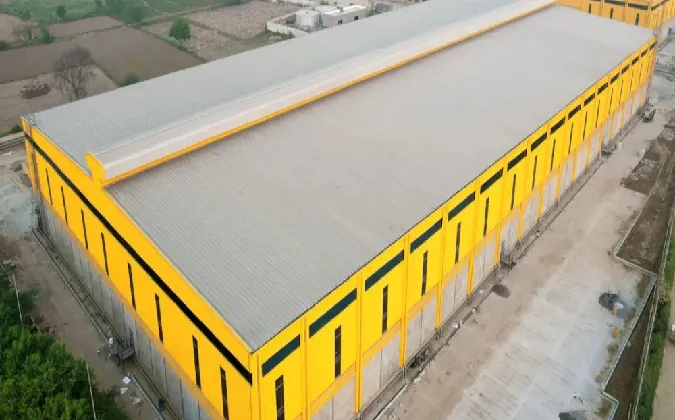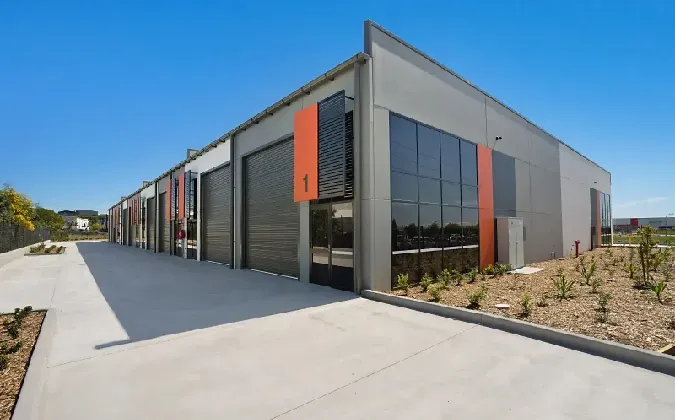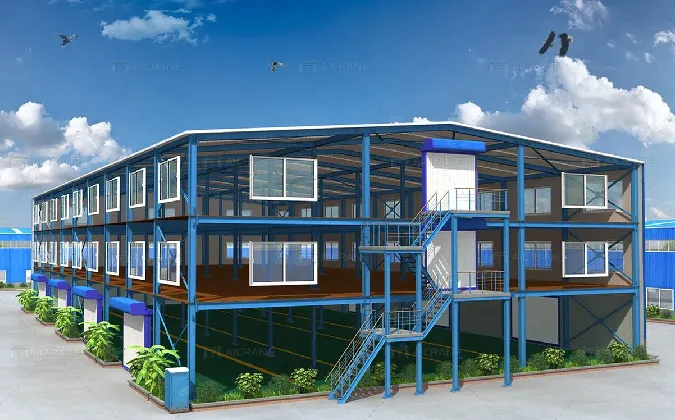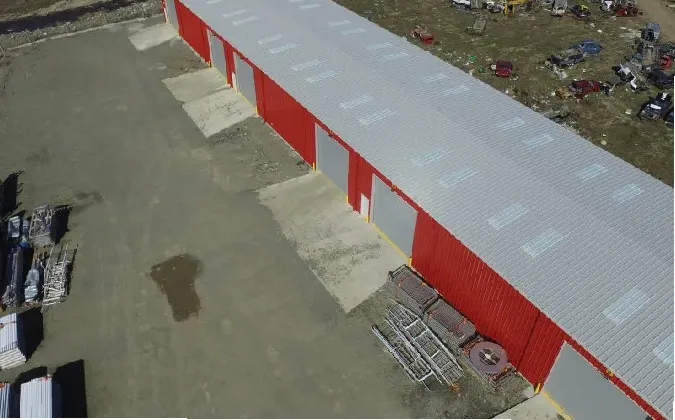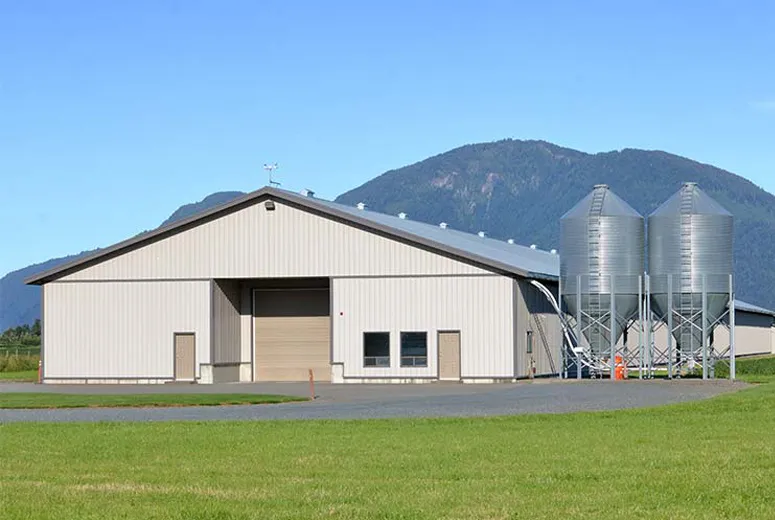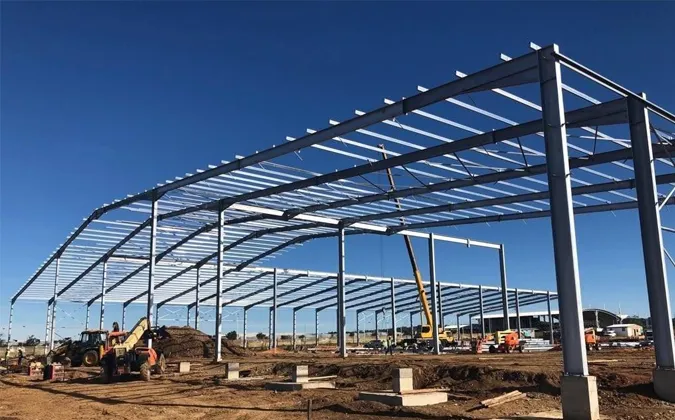Aug . 27, 2025 04:40 Back to list
Driving Modern Construction with Steel Structure Solutions
In the realm of modern industrial and commercial construction, the steel structure building stands as a testament to innovation, efficiency, and durability. These advanced structural systems are rapidly becoming the preferred choice for a multitude of applications due to their inherent strength, design flexibility, and accelerated construction timelines. From sprawling industrial complexes to sophisticated commercial edifices, steel structures offer unparalleled advantages, optimizing both project timelines and long-term operational costs. This comprehensive overview delves into the core aspects of steel structure construction, highlighting its technological sophistication, diverse applications, and profound impact on contemporary building practices.
Industry Trends and Market Dynamics in Steel Structure Construction
The global market for steel structure building is experiencing robust growth, driven by increasing infrastructure development, rapid industrialization, and a growing emphasis on sustainable and resilient construction methods. Key trends shaping this industry include:
- Sustainability and Green Building: Steel is 100% recyclable, contributing significantly to reduced environmental impact. The demand for LEED-certified buildings and eco-friendly construction materials increasingly favors steel structures. Innovations in low-carbon steel production and recycled content are further enhancing its green credentials.
- Technological Integration: The adoption of Building Information Modeling (BIM), advanced computational design, and automated fabrication processes (e.g., CNC cutting and robotic welding) is streamlining design, manufacturing, and erection, reducing errors and improving precision.
- Modular and Prefabricated Construction: A growing trend towards off-site fabrication of structural components leads to faster on-site assembly, reduced labor costs, and enhanced quality control. This is particularly beneficial for large-scale steel structure plant projects.
- Resilience and Durability: Steel structures are inherently resistant to seismic activity, wind loads, and other extreme weather conditions, making them ideal for regions prone to natural disasters. Advances in protective coatings and high-performance alloys further extend their service life.
- Expansion into New Applications: Beyond traditional industrial and commercial buildings, steel structures are finding increasing use in multi-story residential buildings, long-span bridges, and complex architectural designs, showcasing their versatility.
The market is projected to continue its upward trajectory, with significant investments in emerging economies and a focus on upgrading existing infrastructure in developed nations. According to a recent industry report, the global structural steel market size was valued at USD 138.8 billion in 2023 and is anticipated to reach USD 227.5 billion by 2032, growing at a CAGR of 5.6% during the forecast period.
The Meticulous Process Flow of a Steel Structure Building
The construction of a steel structure building is a highly engineered and systematic process, ensuring precision, strength, and longevity. This meticulous flow integrates advanced design principles with rigorous manufacturing and assembly techniques.
1. Design and Engineering Phase
This initial phase involves conceptualization, structural analysis, and detailed design. Utilizing advanced software such as CAD (Computer-Aided Design), SAP2000, ETABS, and Tekla Structures, engineers develop comprehensive blueprints and 3D models. Considerations include load-bearing capacity (dead loads, live loads, wind loads, seismic loads), material specifications (e.g., Q235B, Q345B steel grades), connection details, and overall structural stability. The design adheres to international building codes and standards like AISC (American Institute of Steel Construction), Eurocode 3, and relevant national standards.
2. Material Sourcing and Preparation
High-quality structural steel, typically in the form of I-beams, H-sections, angles, channels, and plates, is sourced from certified mills. These materials undergo initial inspection to verify chemical composition and mechanical properties against specifications (e.g., ASTM A36, A572 Grade 50). Advanced manufacturing processes for raw steel include basic oxygen steelmaking (BOS) or electric arc furnace (EAF) methods, followed by hot rolling to achieve desired profiles. For specialized components, processes like forging might be used to enhance strength and ductility.
3. Fabrication Process
In the fabrication shop, raw steel sections are transformed into finished components ready for assembly. This involves:
- Cutting: Precision cutting using CNC plasma, laser, or oxy-fuel cutting machines ensures accurate dimensions and shapes.
- Drilling: Automated CNC drilling machines create precise bolt holes for connections.
- Welding: Skilled welders employ various techniques (e.g., Shielded Metal Arc Welding - SMAW, Gas Metal Arc Welding - GMAW) to join components. All welding procedures adhere to AWS (American Welding Society) or ISO standards.
- Assembly: Sub-assemblies are put together before final erection.
- Surface Treatment: Components are cleaned (e.g., sandblasting to SA 2.5 standard) and then coated with primers (e.g., zinc-rich epoxy primer), intermediate coats, and topcoats to prevent corrosion and enhance aesthetics. Hot-dip galvanization is often employed for superior corrosion resistance, particularly for structures exposed to harsh environments like those in petrochemical or water treatment industries.
4. Quality Control and Testing
Throughout fabrication, rigorous quality control measures are implemented. This includes:
- Dimensional Checks: Ensuring components match design specifications.
- Non-Destructive Testing (NDT): Methods like ultrasonic testing (UT), magnetic particle inspection (MPI), and radiographic testing (RT) are used to inspect welds for internal flaws.
- Coating Thickness Measurement: Verifying anti-corrosion coating thickness.
- Material Traceability: Maintaining records of material origin and testing.
Compliance with ISO 9001 quality management systems and ANSI/AISC quality certifications is paramount.
5. Logistics and Site Erection
Fabricated components are carefully packaged, transported to the construction site, and then systematically erected using cranes and skilled crews. Detailed erection drawings and safety protocols are strictly followed to ensure efficient and secure assembly. This modular approach significantly reduces on-site construction time compared to traditional methods.
6. Finishing and Handover
Once the primary steel structure is erected, secondary components like roofing, wall cladding, insulation, doors, and windows are installed. Final inspections are conducted to ensure adherence to all design and quality standards before project handover.
Service Life and Target Industries
A well-designed and properly maintained steel structure building can have a service life exceeding 50-100 years. Its inherent durability makes it ideal for target industries such as petrochemical (where corrosion resistance is critical, often achieved through specialized coatings and galvanized finishes), metallurgy, energy production, logistics and warehousing, automotive, and water supply & drainage facilities. For instance, in petrochemical plants, steel structures are designed to withstand aggressive chemical environments and high operational temperatures, often incorporating fire-resistant coatings and advanced corrosion protection systems. In water supply & drainage, the structures benefit from corrosion resistance to handle humid and sometimes corrosive atmospheres.
Schematic Process Steps:
- Client Consultation & Requirements Definition
- Structural Design & Engineering (BIM, CAD, FEA)
- Material Procurement (Certified Steel Grades)
- Fabrication (Cutting, Drilling, Welding, Assembly)
- Surface Treatment & Corrosion Protection (Blasting, Painting, Galvanizing)
- Quality Inspection & Testing (NDT, Dimensional)
- Logistics & Transportation
- Site Erection & Installation
- Finishing & Cladding
- Final Inspection & Handover
Technical Specifications and Parameters of Steel Structure Building
Understanding the precise technical specifications is crucial for any successful steel structure building project. These parameters define the structural integrity, performance, and compliance with industry standards. Here, we present key technical data.
Common Steel Grades and Their Properties
| Steel Grade (China Standard) | Equivalent (ASTM/EN) | Yield Strength (min. MPa) | Tensile Strength (MPa) | Elongation (%) | Typical Application |
|---|---|---|---|---|---|
| Q235B | ASTM A36 / EN S235JR | 235 | 370-500 | 26 | General structures, warehouses |
| Q345B | ASTM A572 Grade 50 / EN S355JR | 345 | 470-630 | 22 | Heavy-duty structures, large spans |
| Q460C | ASTM A572 Grade 65 / EN S460N | 460 | 570-720 | Ultra-large span structures, high-rise |
Design Load Parameters (Example for a Typical Industrial Building)
| Load Type | Parameter | Typical Value / Range | Remarks |
|---|---|---|---|
| Live Load (Roof) | Uniformly Distributed Load | 0.5 - 1.0 kN/m² | Maintenance, minor equipment |
| Live Load (Floor) | Uniformly Distributed Load | 2.0 - 10.0 kN/m² | Industrial machinery, storage |
| Wind Load | Basic Wind Pressure | 0.3 - 1.0 kN/m² | Varies by region and height (ASCE 7) |
| Snow Load | Ground Snow Load | 0 - 2.0 kN/m² | Varies by geographical location |
| Seismic Load | Seismic Design Category | A to F | Based on site-specific seismic hazard |
| Fire Resistance Rating | Duration | 1-4 hours (typically) | Achieved via fireproofing coatings/encasement |
These parameters are meticulously calculated by structural engineers to ensure the safety, stability, and longevity of every steel structure building. Compliance with local building codes, such as the International Building Code (IBC) or relevant European standards (EN 1990-1999), is paramount.

Figure 1: An intricate view of prefabricated steel components for a modern industrial facility.
Diverse Application Scenarios and Target Industries
The adaptability and robust nature of steel structure building solutions enable their widespread application across a diverse range of sectors, each benefiting from steel's unique attributes.
- Industrial and Manufacturing Plants: Steel is the cornerstone for creating large-span, column-free spaces essential for manufacturing lines, heavy machinery, and automated systems. This includes steel structure plant facilities for automotive, electronics, heavy equipment, and textiles. The ability to incorporate overhead cranes (e.g., up to 200-ton capacity) directly into the structural design makes steel ideal for factories requiring material handling solutions.
- Warehousing and Logistics Centers: The demand for vast, clear-span storage areas and high-bay racking systems is perfectly met by steel structures. Speed of erection and flexibility for future expansion are critical advantages for rapidly evolving logistics operations.
- Commercial Buildings and Retail Stores: Modern shopping malls, supermarkets, and office complexes frequently leverage steel for its aesthetic versatility, allowing for expansive glass facades and open-plan interiors. Its ability to create unique architectural forms is highly valued.
- Agricultural Structures: From large-scale farm storage buildings to livestock shelters and greenhouses, steel offers durability against harsh weather, pest resistance, and ease of cleaning, ensuring a long and low-maintenance service life.
- Specialized Facilities:
- Petrochemical Industry: Requires structures resistant to corrosive chemicals and extreme temperatures. Steel, especially with specialized coatings and cathodic protection, provides essential longevity and safety for refineries, processing plants, and storage facilities.
- Metallurgy: High-temperature environments and heavy loads demand the superior strength and heat resistance of steel in foundries, rolling mills, and smelters.
- Water Supply & Drainage: Structures in this sector, such as pumping stations, treatment plants, and pipe support systems, benefit from steel's corrosion resistance (often achieved through galvanization or epoxy coatings) in humid or aquatic environments, ensuring operational integrity and extended asset life.
- Power Generation: Steel structures are integral to power plants, supporting heavy equipment like turbines, boilers, and conveyor systems, designed to withstand significant dynamic loads and operational stresses.
In each of these scenarios, the inherent advantages of steel structures, such as energy saving through optimized insulation systems and superior corrosion resistance, directly translate into lower operational costs and enhanced asset protection.
Technical Advantages of a Steel Structure Building
The proliferation of the steel structure building in modern construction is directly attributable to its compelling array of technical and economic advantages:
- Superior Strength-to-Weight Ratio: Steel offers exceptional strength relative to its weight, allowing for lighter foundations and larger clear spans than concrete or timber, reducing material consumption and construction costs. This is particularly advantageous for multi-story structures and long-span roofs in a steel structure factory.
- Rapid Construction and Reduced Project Timelines: Fabrication off-site in a controlled factory environment dramatically accelerates on-site erection. Components arrive pre-fabricated and pre-drilled, minimizing on-site labor and associated risks, leading to project completion up to 30-50% faster than traditional methods.
- Exceptional Durability and Longevity: Steel is inherently resistant to rot, pests, and fire (when properly fireproofed). With appropriate surface treatments like galvanization or high-performance paint systems, it offers outstanding corrosion resistance, ensuring a service life of many decades even in aggressive environments.
- Design Flexibility and Aesthetic Versatility: Steel can be shaped into complex geometries, enabling innovative architectural designs and maximizing usable space. It facilitates expansive glass facades and intricate rooflines that are challenging or impossible with other materials.
- Sustainability and Recyclability: Steel is one of the most recycled materials globally, with over 88% of structural steel recovered and recycled into new products. This significantly reduces waste and the environmental footprint of construction projects, aligning with circular economy principles.
- High Quality Control: Factory fabrication ensures consistent quality and adherence to strict tolerances, which is difficult to achieve with on-site construction methods. This translates to fewer defects and higher structural integrity.
- Cost-Effectiveness: While initial material costs might be higher than some alternatives, the overall lifecycle cost is often lower due to faster construction, reduced labor, minimal maintenance, and long service life.

Figure 2: Workers assembling a pre-engineered steel structure on-site, demonstrating construction efficiency.
Vendor Comparison: Selecting the Right Partner for Your Steel Structure Building
Choosing the right supplier for your steel structure building project is a critical decision that directly impacts project success, budget, and long-term performance. A thorough vendor comparison should consider several key factors beyond just the initial quote.
Key Criteria for Vendor Evaluation:
- Experience and Track Record: Look for vendors with a proven history in similar projects, demonstrating expertise in the specific type and scale of steel structure factory you require. Years of operation and a portfolio of completed projects are strong indicators.
- Certifications and Compliance: Ensure the vendor holds relevant industry certifications (e.g., ISO 9001 for quality management, ISO 3834 for welding, AISC certification, CE marking for European markets). These attest to adherence to international standards and quality control.
- Technical Capabilities and Engineering Expertise: Assess their in-house design and engineering team, their use of advanced software (BIM, finite element analysis), and their ability to handle complex structural challenges.
- Fabrication Facilities and Technology: Visit or inquire about their fabrication plant. Modern, well-equipped facilities with CNC machinery, automated welding, and effective quality control systems are crucial for precision and efficiency.
- Material Sourcing and Quality: Understand their material procurement process, ensuring they source from reputable mills and provide material traceability reports (MTRs) for all steel components.
- Project Management and Communication: Effective project management, clear communication channels, and a dedicated project manager are vital for smooth project execution.
- After-Sales Support and Warranty: Evaluate their warranty terms, availability of spare parts, and support for maintenance or future modifications.
- Cost and Value Proposition: While cost is important, focus on the overall value, including quality, speed, reliability, and long-term operational savings, rather than just the lowest bid.
Example Vendor Comparison Matrix:
| Feature/Criterion | Vendor A (e.g., Hongji Shunda) | Vendor B (Competitor) | Vendor C (Competitor) |
|---|---|---|---|
| Years in Business | 20+ | 10-15 | 5-10 |
| Key Certifications | ISO 9001, CE, AISC Compliant | ISO 9001 | Local Standard |
| In-house Engineering Team | Full-service (BIM, FEA) | Limited | Outsourced |
| Typical Project Size (Tons) | 100 - 10,000+ | 50 - 2,000 | 20 - 500 |
| Fabrication Capacity | High-volume, automated | Medium, semi-automated | Low, manual |
| Corrosion Protection Options | Galvanization, extensive coating systems | Standard painting | Basic primer |
Customized Solutions for Your Steel Structure Building
One of the most significant advantages of a steel structure building is its inherent adaptability, allowing for extensive customization to meet specific operational demands, environmental conditions, and aesthetic preferences. This flexibility ensures that each project is a tailored solution, not a one-size-fits-all approach.
- Architectural Integration: Steel frames can support a wide array of cladding materials, from traditional insulated sandwich panels and corrugated steel to advanced glass curtain walls and composite materials, enabling diverse architectural expressions.
- Optimized Layouts and Spans: Custom designs allow for precise column spacing and clear spans, maximizing usable interior space for machinery, storage, or office layouts. This is crucial for efficient material flow in a modern steel structure factory.
- Environmental Control Systems: Integrated designs for specialized HVAC, advanced insulation (e.g., mineral wool, PIR panels), and ventilation systems can be implemented to maintain precise internal temperatures and air quality, crucial for sensitive manufacturing processes or cold storage.
- Specialized Coatings and Fire Protection: Depending on the operational environment (e.g., corrosive industrial settings, high-fire-risk areas), custom paint systems (e.g., multi-layer epoxy, intumescent coatings) or hot-dip galvanization are specified to provide enhanced protection and meet specific fire ratings (e.g., 2-hour or 4-hour fire resistance).
- Integration of Utilities and Services: Custom structural designs efficiently incorporate provisions for complex electrical conduits, plumbing, data networks, and process piping, ensuring seamless integration and accessibility for maintenance.
- Expansion and Adaptability: Steel structures are inherently adaptable. Designing with future expansion in mind – by pre-engineering connection points or using modular components – allows for cost-effective additions or modifications as business needs evolve.
- Crane Systems and Heavy Load Support: For industrial applications, customized gantry crane runways, jib crane supports, and foundations for heavy machinery are seamlessly integrated into the structural design, precisely engineered to the required lifting capacities (e.g., 5-ton to 100-ton overhead cranes).
Our engineering team collaborates closely with clients to translate their unique requirements into robust, efficient, and cost-effective customized solutions, leveraging advanced BIM and structural analysis tools to ensure optimal performance and compliance.
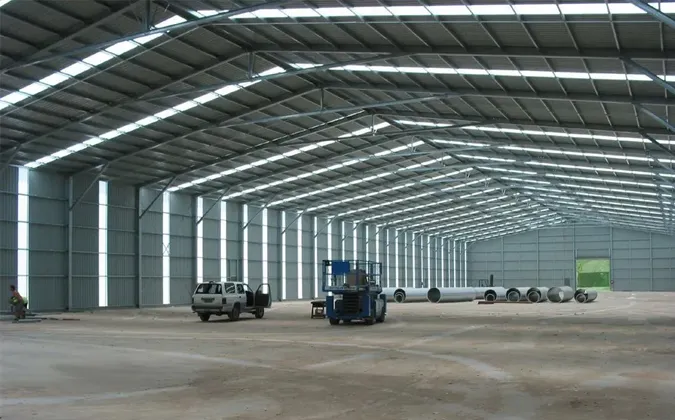
Figure 3: Interior view of a custom-designed steel structure with integrated crane systems and specialized lighting.
Real-World Application Case Studies
Our extensive experience in delivering high-quality steel structure building solutions is best demonstrated through successful project implementations across various industries.
Case Study 1: Large-Scale Automotive Manufacturing Plant
Client: Major Automotive Manufacturer
Location: Southeast Asia
Challenge: The client required a new steel structure plant covering 50,000 square meters, designed to accommodate heavy robotic assembly lines and overhead gantry cranes (up to 50-ton capacity), with a strict completion deadline to meet production targets. The facility needed to be highly resistant to seismic activity and corrosive atmospheric elements typical of an industrial zone.
Solution: We designed a multi-span steel frame structure utilizing high-strength Q345B steel for primary components. The design incorporated robust lateral bracing systems for seismic resilience and integral crane runways. All structural elements underwent hot-dip galvanization followed by a three-layer marine-grade epoxy coating to ensure superior corrosion resistance. Leveraging pre-fabrication techniques, the entire steel frame was erected in just 4 months, meeting the accelerated timeline.
Outcome: The plant was commissioned on schedule, providing a highly durable and functional facility capable of supporting the client's advanced manufacturing processes for decades. The robust corrosion protection system has significantly minimized maintenance requirements.
Case Study 2: High-Volume Logistics Distribution Center
Client: International E-commerce Logistics Provider
Location: European Economic Area
Challenge: The client needed a vast (80,000 square meter) distribution center with exceptionally large clear spans to optimize automated sorting and racking systems. Energy efficiency and rapid deployment were paramount to support their expanding network.
Solution: We proposed a pre-engineered steel structure factory design with custom-fabricated large-span trusses to create expansive, column-free interior spaces. High-performance insulated sandwich panels were used for the roof and walls, achieving excellent thermal performance (U-value of 0.18 W/m²K) for significant energy savings. The modular nature of the steel structure allowed for a streamlined construction process, completing the shell and core within 6 months.
Outcome: The logistics center became operational ahead of schedule, dramatically increasing the client's regional throughput capacity. The energy-efficient design resulted in substantial operational cost savings, demonstrating the long-term value of a meticulously planned steel structure.
Authoritativeness and Trustworthiness (EEAT Compliance)
Establishing trust and authority is paramount in B2B engagements. Our commitment to excellence in every steel structure building project is underpinned by rigorous standards and transparent practices.
Certifications and Quality Assurance
Our manufacturing processes and products adhere to stringent international quality and safety standards. We hold:
- ISO 9001:2015 Certification: Demonstrating a robust Quality Management System across all stages, from design to delivery.
- CE Marking: Compliance with European Union safety, health, and environmental protection requirements for products sold within the EEA.
- AISC (American Institute of Steel Construction) Compliant Fabrication: Our fabrication practices meet the high standards set by AISC, ensuring structural integrity and reliability.
- AWS D1.1/D1.5 Welding Standards: All welding operations are performed by certified welders according to the American Welding Society's codes for structural steel and bridge welding.
Partners and Clientele
We have successfully partnered with leading enterprises across various sectors, including automotive giants, international logistics firms, major energy companies, and public infrastructure developers. Our client testimonials consistently highlight our reliability, engineering prowess, and commitment to project timelines.
Experience and Expertise
With over two decades of specialized experience in designing, fabricating, and erecting complex steel structure building projects, our team comprises highly skilled structural engineers, certified welders, and experienced project managers. We have successfully completed thousands of projects globally, establishing a deep reservoir of practical experience in diverse geographical and climatic conditions.
Transparent Test Data and Analysis
We provide comprehensive documentation for all materials and processes, including Material Test Reports (MTRs), Non-Destructive Testing (NDT) results, and coating inspection reports. Our engineering designs are supported by detailed structural analysis using finite element modeling (FEM) to ensure optimal performance and safety under various load conditions.
Frequently Asked Questions (FAQ) about Steel Structure Buildings
Q1: What is the typical lead time for a steel structure building project?
A1: Lead times vary significantly based on project size, complexity, and customization. Generally, for a standard industrial warehouse (e.g., 2,000-5,000 sqm), the design and fabrication phase can take 4-8 weeks, followed by 2-4 weeks for shipping and 3-6 weeks for on-site erection. Larger, more complex projects naturally require longer durations.
Q2: What kind of warranty is offered on your steel structures?
A2: We typically offer a structural warranty of 10-20 years on the primary steel frame, contingent upon proper installation and maintenance. Specific warranty terms for coatings, cladding, and secondary components are provided based on product specifications and supplier agreements.
Q3: How durable are steel structures against natural disasters like earthquakes or hurricanes?
A3: Steel structure building systems are engineered for exceptional resilience. Their inherent ductility allows them to absorb seismic energy without sudden failure. Designs are specifically tailored to local seismic zones and wind load requirements, adhering to international codes like ASCE 7 (Minimum Design Loads and Associated Criteria for Buildings and Other Structures) to ensure maximum safety and structural integrity against extreme weather events.
Q4: What are the maintenance requirements for a steel structure?
A4: Compared to other construction methods, steel structures generally require minimal maintenance. This typically involves periodic inspections of coatings for integrity, checking bolt connections for tightness, and ensuring drainage systems are clear. The frequency depends on the environment and the quality of the initial corrosion protection system.
Q5: Can you provide after-sales support and spare parts?
A5: Yes, we offer comprehensive after-sales support, including technical assistance, maintenance guidance, and the supply of spare parts or replacement components for any part of your steel structure building. Our dedicated support team is available to ensure the long-term operational excellence of your facility.

Figure 4: A completed steel structure facility, ready for operations, highlighting robust design.
Conclusion: The Future of Construction is Steel
The undeniable advantages of a steel structure building — from its exceptional strength and rapid construction to its design flexibility and environmental sustainability — solidify its position as the preferred material for modern industrial, commercial, and specialized infrastructure. As industries continue to evolve, demanding greater efficiency, resilience, and adaptability, steel structures will remain at the forefront of innovative construction solutions, driving progress and shaping the skylines of tomorrow.
References
- World Steel Association. (2023). Steel Statistical Yearbook 2023. [Accessed from worldsteel.org]
- American Institute of Steel Construction (AISC). (2022). Specification for Structural Steel Buildings. [Accessed from aisc.org]
- European Committee for Standardization (CEN). (2005). EN 1993 Eurocode 3: Design of steel structures. [Accessed from standards.cen.eu]
- Grand View Research. (2024). Structural Steel Market Size, Share & Trends Analysis Report. [Accessed from grandviewresearch.com]
- ASTM International. (Various Standards). Standards for Steel Products. [Accessed from astm.org]
-
Bolted Connections in Steel Frame Warehouse
NewsNov.17,2025
-
Hay Storage in Farm Metal Buildings
NewsNov.17,2025
-
Advantages of a Steel Portal Frame Shed
NewsNov.17,2025
-
The Erection Process of a Steel Building Hangar
NewsNov.17,2025
-
Energy Efficiency of Steel Dome Garage Kits
NewsNov.17,2025
-
Fire Resistance of Kit Metal Garages
NewsNov.17,2025
Products categories
Our Latest News
We have a professional design team and an excellent production and construction team.






